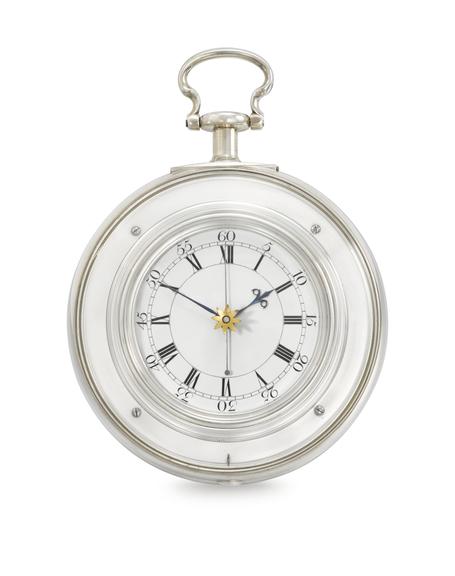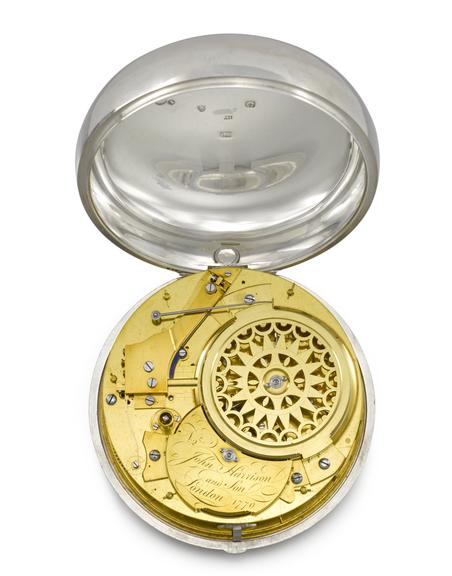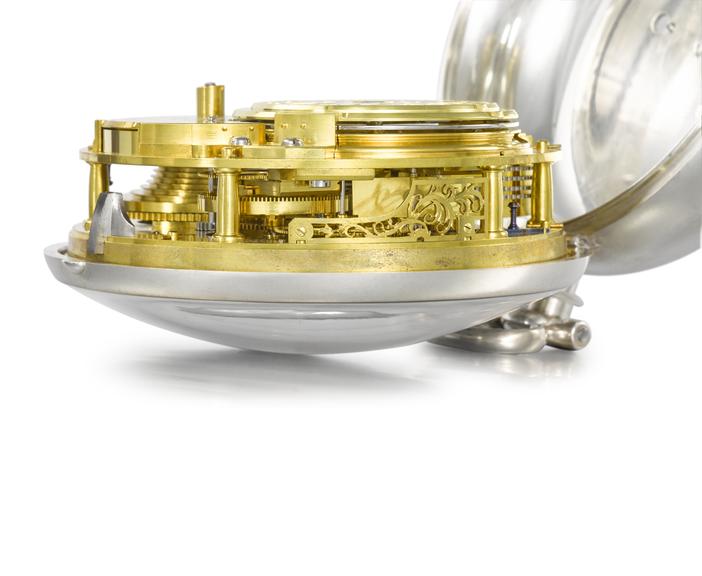Cushion for H5
Support cushion for the marine timekeeper H5, by Harrison & Son, London, England, 1770.








Silver pair-cased marine timekeeper, known as H5, by John Harrison & Son, London.
White enamel dial with gold central star to adjust hands. Verge escapement with Harrison’s special diamond pallets. Steel balance and spring. Fusee. Maintaining power. 7 1/2 seconds remontoir on 4th wheel. All wheels from the 3rd, jewelled. Long bimetallic strip on adjustable frame. Original key and starting pin. Signed ‘John Harrison & Son London 1770 No. 2’. Case hallmarked for 1768 – 9 and stamped ‘HT’ (probably Henry Taylor who became a free Clockmaker in 1746). With original mahogany carrying case and three silk cushions.
Mechanically, this timekeeper is very similar to that of John Harrison's prize-winning longitude watch, H4 (in the collections of the Royal Museums Greenwich). It is now generally known as H5, being the fifth and last timekeeper that he produced as part of the 'Longitude Reward', and completed when he was 77. Personally tested by King George III at his observatory in Richmond, this timekeeper helped secure Harrison the last part of his Longitude prize-money.
Clockmakers Museum No. 598
Support cushion for the marine timekeeper H5, by Harrison & Son, London, England, 1770.







